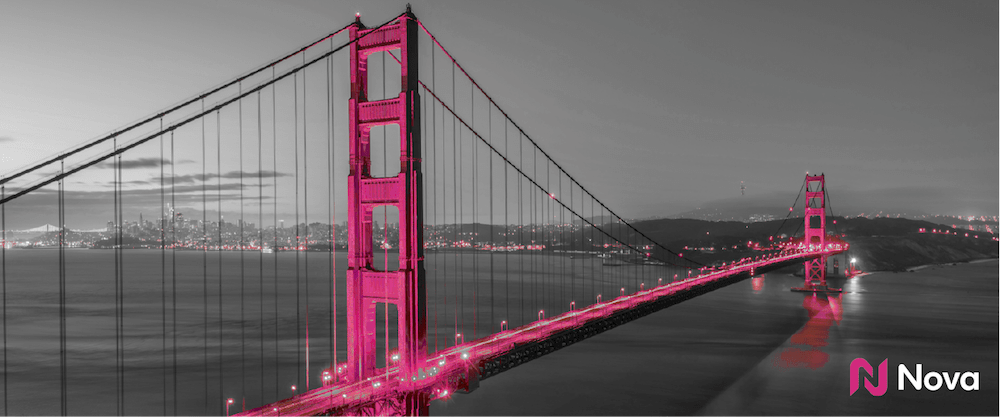Why building bridges, not walls, is the model for better ad experiences

Kunal Gupta, CEO, Nova
The time is here to build bridges, not walls. The walled gardens first lured in advertisers with the promise of reach. They delivered on that promise, and then innovated with beautiful creative formats that until now, have been stuck within their walls.
Facebook, Instagram, Twitter, Snapchat, Pinterest, TikTok, LinkedIn and more each have their own proprietary creative specifications. From the dimensions of a photo, to the length of a video, to the character count of captions, and more, everything has been designed to be proprietary.
And yet, the past year has made it clear about what matters in advertising — and marketers are tired. It is exhausting to be creating for each of the walled gardens and by the time those same marketers turn to building creative for the open web, they are out of time, budget and interest. Who is excited to design another 300×250 banner ad? Who wins an award for a 300×250 banner ad? Who gets promoted for bringing to their manager yet another 300×250 banner ad? The answer is clear: no one.
Still, creative is the most important ingredient in effective advertising. Without it, brands do not stand a chance of reaching new audiences and expanding market share. Again, today, the best creative is sitting within the walled gardens. Marketers need solutions to unlock the full value of their creative investments.
Engagement over impressions is the walled garden model
Beautiful Instagram photos, engaging TikTok videos and thought-provoking Twitter posts are all examples of creative designed to earn attention. They are visual first and copy light; at their best they are thoughtful and tasteful.
The bar is high for creative in the walled gardens, as users can comment, like and share ads. This environment inspires marketers, something like a small carrot and a large stick, to be more intentional about the creative that they build. The business model is designed to optimize for better creative, and there is a real economic incentive to build better experiences.
Walled gardens transact on an engagement model with advertisers, not on an impression model. The price to advertise on Facebook is determined dynamically based on how engaging the creative is. This is why an insurance brand will have to pay more than a sports brand to reach the exact same audience. It is simply easier for a sports brand to build engaging creative. The algorithm then rewards the brand with a lower cost of media.
The business model for the open web is fundamentally different, an impression-based model. This is why, two decades in, banner ads still look like banner ads. There is no economic incentive for brands to build better creative. And there likely will not be, due to the legacy of how advertising infrastructure has been designed and deployed at scale. This is why the creative built for the walled gardens will almost always be better than the creative built for the open web.
What marketers need to make creative work better overall is a bridge between the two environments.
Never before in media have brands had to produce different creative to reach the same audience in the same channel. The bridges needed within digital are needed now than ever before, given the demands on maximizing working media and reducing costs.
Brands must lead the conversation around better creative
The walled gardens and the open web are free and accessible for everyone. The same customers that are available in the walled garden are also available on the open web. It is time that the same creative, the kind that customers clearly prefer, is available without walls. Imagine not being able to run a TV commercial across different broadcasters. This is the state of advertising creative today in the walled gardens.
The walled gardens intentionally do not support IAB creative standards. Facebook does not support a single IAB creative, and likely never will — and now, the other walled gardens are following Facebook’s approach to invent their own standards, not the IAB’s approach to create industry-wide standards.
A new conversation about creative standards in digital is going to be led not by the IAB, not by the walled gardens, but by brands. They already know which creative is working best in digital and when brands speak, everyone does listen.
To reach customers is no longer enough. Brands must leave an impression. To engage with customers is to earn their attention. The bar is high. When advertising works for the customer, it works for the brand. The creative built for the walled gardens works for customers, that is why it works for brands. It is the time for that same creative to work for customers, and brands, everywhere. It is time to build bridges, not walls.
More from Digiday

Chasing U.S. growth, Tony’s Chocolonely focuses on a retail media and social blend
Premium chocolate brand Tony’s Chocolonely is focusing on retail media and paid social as it targets U.S. growth.

Creators are left wanting more from Spotify’s push to video
The streaming service will have to step up certain features in order to shift people toward video podcasts on its app.

The year the memes took over reality – and marketing followed
Subcultures aren’t niche anymore — they’re the culture. And for marketers, that changes everything.





